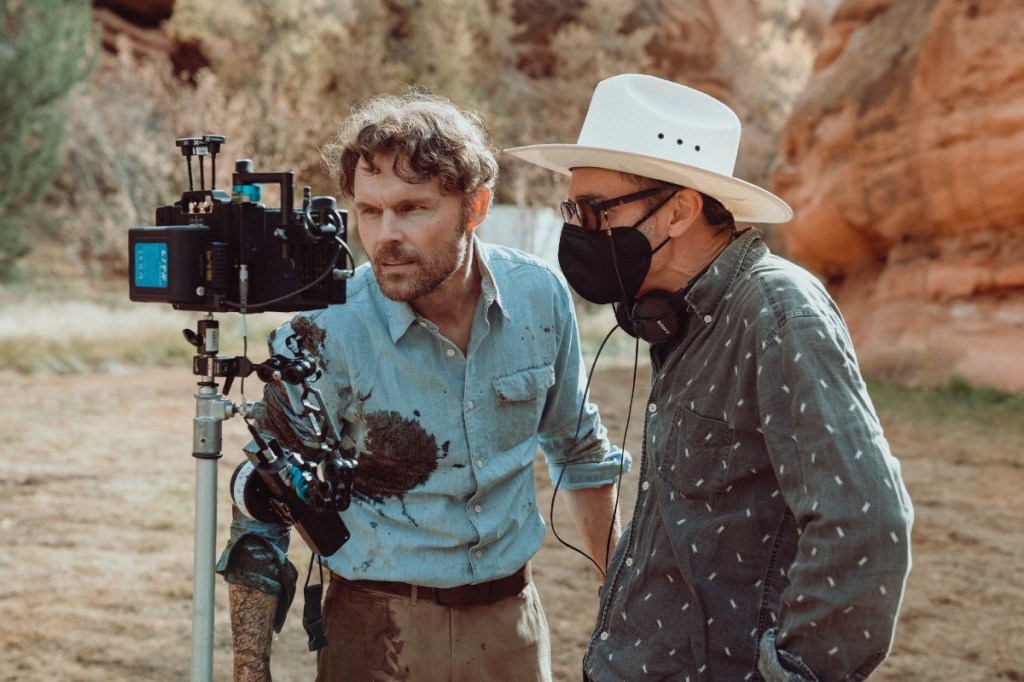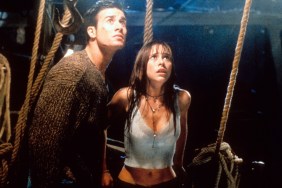The Seeding sees a hiker get lost in the desert, where an encounter with a gang of feral children propelled by haunting legacies traps him in a sadistic battle for survival with a frightening endgame.
Barnaby Clay, the director of The Seeding, talks to ComingSoon’s Neil Bolt about filming in a canyon, the advantages of music video experience, and his horror history.
Neil Bolt: The desert feels a bit undervalued as a folk horror destination. For you, what made it an exciting area to explore?
Barnaby Clay: I come from England, specifically London, and I moved over to the States about 15 years ago. I’ve always been fascinated with the desert. Coming from England, it’s so far from anything I grew up with. I loved Westerns as a kid, and there’s something about the expanse: it really humanizes you on a certain level because you feel tiny. And also you can feel, quite quickly, extremely vulnerable.
I was just there recently, doing some writing, and I like going on a walk out there and it doesn’t take long to end up in the middle of nowhere. All it takes is to climb over the wrong pile of rocks, and you’re lost. Out there, if that happens you’re up against it because the idea of being lost or injured, like the character in my film, is a scary prospect. It gets to the vulnerabilities of someone who mostly lives in cities.
I know what you mean. Where I come from is relatively small compared to California, but it’s a bit coastal, a bit towny, and has some village areas, but when you go out to the forest, it feels gargantuan by comparison. For America, it’s an even larger example. Do you think the expanse of a country like the US and its wilderness give more plausibility to these almost post-apocalyptic pocket worlds existing within a wider one?
It does, absolutely. When I was writing the film, I was trying to keep one foot in reality, stopping to check myself and ask, ‘’Is this feasible?’’ Then, later on that day, reading news of things such as people locking their kids in a basement, and you go, ‘’Oh yeah, this is America’’. It is so big, and there is so much that goes on.
All my friends, regardless of where they’re from, when they go into the desert, have experiences where some locals can be a bit threatening. You go to the grocery store out there and get stared at because you’re so clearly not from there. That feeling of stepping off outside your known and suddenly it becomes somebody else’s known. But also, I should say, visually, it’s such a rich canvas to work on. It’s beautiful, and in the canyon we were working in, there were so many interesting textures and shapes. It immediately adds so much. That’s important as well.
Neil Bolt: How long did it take to find the perfect setting?
It took a while, as in like a year. Obviously, we were still doing other things like casting but within that period, we reached out to scouts and production companies all over the world and one came back with an extinct volcano in Romania, an area in the Canary Islands, North Mexico, Alberta Canada—places where geographically you could have something like this. Obviously, you have to add the practical formalities in, like having somewhere nearby to stay, and how long it takes to get in and out each day. In the end, someone sent me pictures of this place in Southern Utah, and I really liked the feel of the canyon in those pictures.
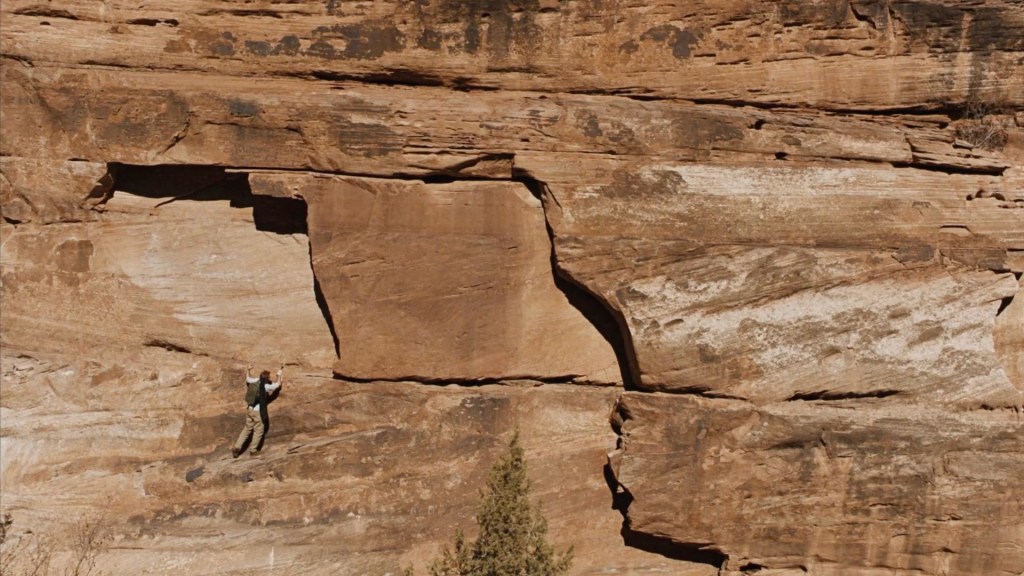
What you see in the film isn’t exactly how it was. We did some work in post. It’s essentially a bend in a canyon, but we did some set extension to fill in the cracks and turn it into a pit. You could get in and out of it, but it was still difficult and grueling because there was one off-road route in there which took about 20 minutes. It could barely be classified as a road, and it actually washed away on the week before we shot. Throughout the whole shoot, we were constantly rebuilding this road.
Just being out there, I think everyone involved sort of felt trapped in that canyon because of how far out it was. We were in it for 19 days. I remember one day we went up top to do some shooting on the ridge. It was like a breath of fresh air. We were like, ‘’Oh, thank God, we’re out! Out of the Canyon for a day!’’. It felt so different. There was a horizon; it was warmer. It was a relief, a respite from being in that canyon for a while.
Still a good choice for a location, though, right?
Oh absolutely. It’s a beautiful place, but hard for me in a situation where problems on a film set come up, which is daily, hourly, every minute. There’s not much time to admire the natural beauty of it. Every now and then, I’d have this moment where I was waiting for a shot to be set up, and I’d have a moment to myself in the corner, have a breather, and I’d look up and go ‘’Wow, this is such a beautiful place to be in’’.
So, keeping close to the difficulties of a shoot, a bit of a two-headed question here. You have a rich history in directing music videos. Firstly, do you feel that gives you an advantage over other directors when pairing music and mood?
I mean, yeah. Two advantages. The first advantage is by spending years making music videos, you get very good at working under pressure, getting as much done in a day as possible, and working with very few resources. It’s the best training for that you could possibly imagine. Especially as over the years, the budgets have shrunk down, but everyone is still expecting the same level of artistry so you’re having to deliver, still. So you get really savvy with your time and resources, being constructive on that front.
Music, I mean for me it’s so important. Even while writing the film, I had music on in the background the whole time. I was listening to the soundtrack to Under the Skin, one piece of music from Stalker, the Tvarkosky film, the main motif. It’s a really interesting piece of music, and it really transports you to a place. Coming from music videos, that’s so much of what you do. You sit and listen to music over and over and let it take you somewhere and come up with an idea around it. That certainly got infused into my way of working in narrative as well, If I’m feeling stuck, or needing inspiration, having some music and letting that lead can help.
Secondly, you also have a lot of experience with short-form films. Were there any challenges transitioning your knowledge to something longer?
The biggest challenge for me, that while I did make a feature-length documentary, this was my first feature-length narrative film, and I was also the writer. I’ve done a lot of short films this way and had it generally under control, but we realized at the end of day one that we were up against a lot and quickly falling behind. We weren’t making our days. I was doing a lot of rewriting when I was there, and I wasn’t really prepared for that. Your inclination is, ‘’This isn’t working; I need the writer to sort this out while I direct the film,’’ but of course, you’re the writer, and you’ve gotta fucking do it, and you got to come up with a solution.
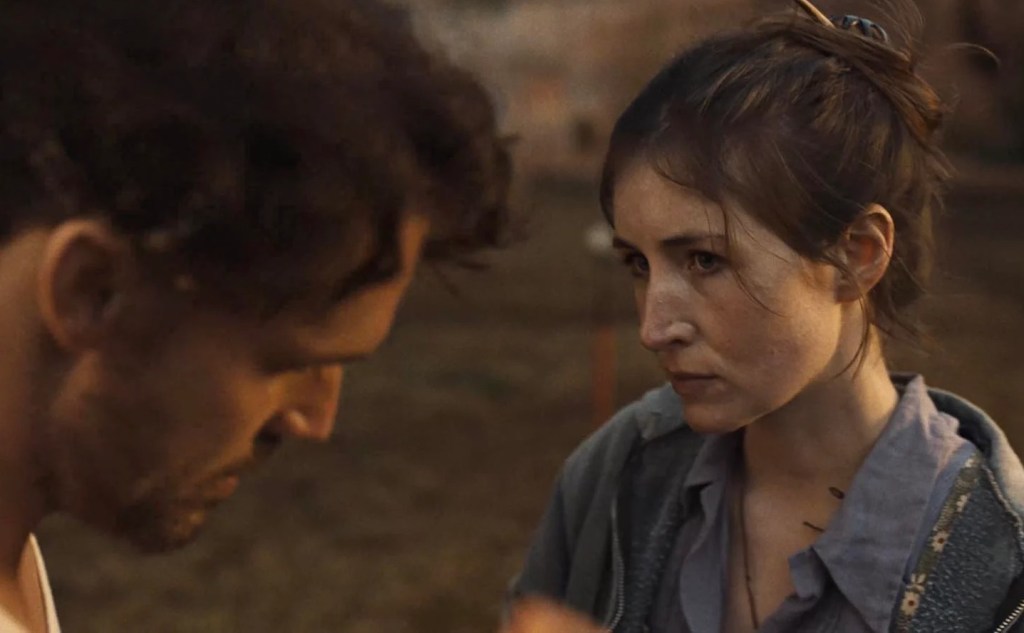
Every Sunday was an off day as we did six-day weeks, and everyone else would do stuff like go off hiking out in this beautiful part of the country, doing really nice things. Meanwhile, I sat in my motel room trying to compress ten scenes into four. So that was one of the biggest surprises and challenges for me, being a writer-director and trying to find the time to make that work under immense duress.
So, onto the film itself, I’ve heard you mention films like Wake in Fright as inspiration for the Seeding The abrasive, confrontational nature of the youths and the unnervingly kindly nature of Alina dovetail in a manner that felt reminiscent of that. The protagonist, Wyndham, is left confused by it all and there’s a sense of an ulterior motive to the kindness. Was that the intention?
Yeah, of course, you wanna create a trajectory for these characters. On the one hand you want to follow what’s going on, but on the other you’re not entirely sure where they’re coming from or what their motives are, maybe even suggest they don’t even know themselves at certain points. I like films that just drop you in with a character without backstory and you just follow them to find out what’s happening. You learn a lot through his actions. I didn’t want to create someone who is a likable hero, but more complicated than that. Someone who doesn’t always react in the best way.
And with her, she has a motive that is quite simple, but it doesn’t make it any easier for her. There are times when both of them question what they are doing, and there are moments toward the end of the second act where maybe you could kind of see these guys hitting it off and living happily ever after, but no, that’s not the way it goes.
One of the reasons I liked Kate Lyn Sheil as an actress for this is that she has this mysterious presence. Even in real life, you’re like, ‘’What is she thinking in there?’’
That sort of person you think could turn on a dime.
Yeah, and that’s so interesting to start with that, you just don’t know what’s going on behind those eyes.
Yes. There also seems to be something insectile about how Wyndham is led and subjected to his fate. The way these strange relationships work in the film is reminiscent of some insect colonies, and things like that. A mishmash of different things in the insect world.
You’re actually really spot on, that’s very much in there. Not that it’s hidden, but it was intentional yeah. The whole idea of this takes from colonies and microworlds like the microworld of this canyon. I was thinking of termite colonies and how the basic idea is to propagate and survive. It’s something that fascinates me, it’s the cycle of everything, you know? I always said with this film that I wanted to talk about big things in a very small way like a fable does.
So yes, that was there, insect colonies and how they are simple yet still complicated. The motives are simple.
And it’s also open to wider interpretation, like the pit is like the womb of the ecosystem.
Yeah, completely. I wanted the canyon to represent that. I liked that idea because it’s supposed to be a feminine space there, her space. When I saw the pictures of Utah, there was this red coloring that felt right for that.
This has been a long-gestating project for you. Was it an encouraging experience? Is horror in your directorial future?
When I came back, I was like, ‘’Ugh, why did I do that? I’m never gonna do that again!’’ But, of course, that didn’t last that long. So yes, it was encouraging. Ultimately, it’s always encouraging to finish anything like that. I have maximum respect for anyone who finishes any film, even if it ends up being garbage. It’s such an achievement.
On horror, It wasn’t like I made a calculated decision to do it, well, maybe I did because horror is generally easily sellable.
And flexible, I find, too.
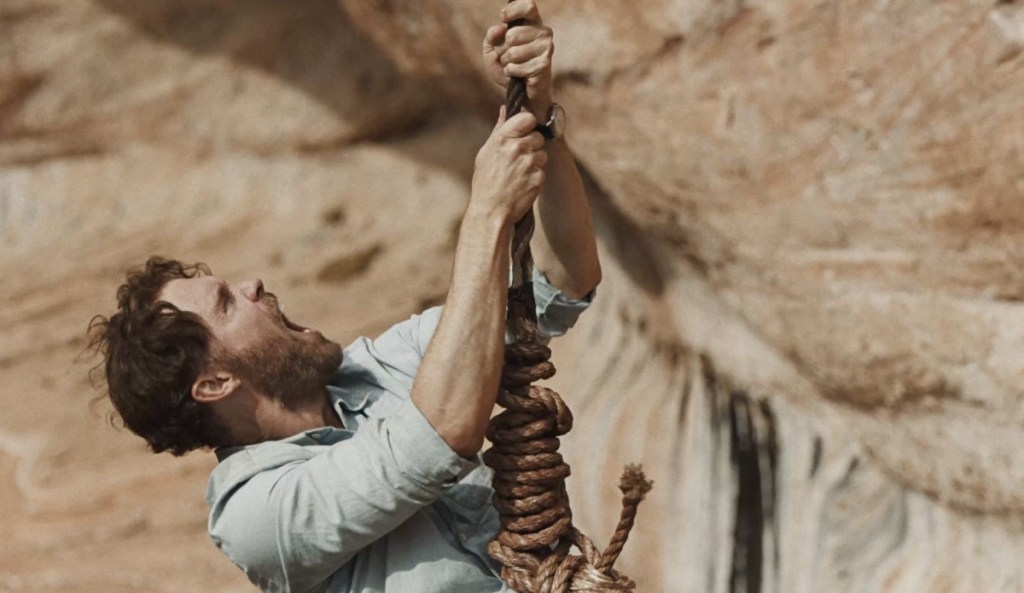
Exactly. I come from that world, as in when I was 14-15 I dived head first into it and didn’t really come out of it until I was in my early 20s when I started branching out to a bit more, but it was really integral. It’s what brought me into cinema and it holds such a special place in my heart. I love horror. Also, it’s encouraging because I wasn’t necessarily planning on making a horror movie, but when I was making my documentary, that was around the time The Witch, It Follows, and Hereditary came out. Before that, for the longest time, I didn’t find inspiration in horror, but all of a sudden, these kinds of films kept popping up, which were the kind of horror that got me excited, and I was like, ‘’I could do that’’.
I’m actually writing something in the horror genre now that’s very different. It’s city-based, in New York. It’s my Upper East Side body horror. It’s Cronenberg meets Polanski.
That does sound intriguing.
Yeah, so that’s where I’m at right now. I’d happily make horror films for a long time, and maybe something else.
Just for fun!
Haha, yes. Ultimately, you gotta go with what inspires you at the time, so it’s whatever that is.
The Seeding is out now on digital platforms.
